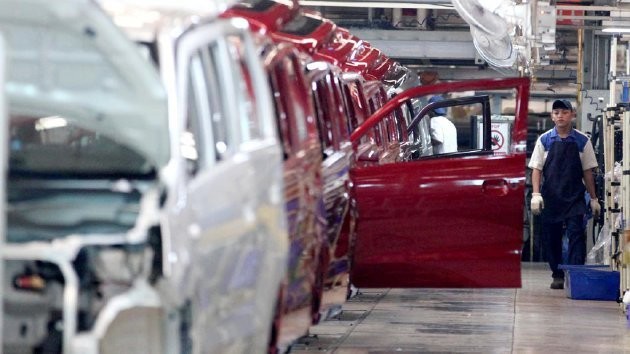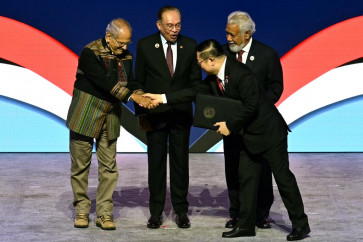Popular Reads
Top Results
Can't find what you're looking for?
View all search resultsPopular Reads
Top Results
Can't find what you're looking for?
View all search resultsManufacturing key to escape 5 percent growth trap
Analysts see that it is not easy to achieve 6 to 7 percent growth, particularly if the country struggles to escape sluggish growth in manufacturing.
Change text size
Gift Premium Articles
to Anyone
G
DP growth that has been hovering around 5 percent in recent years has become a tool for presidential candidate Prabowo Subianto to attack incumbent Jokowi “Jokowi” Widodo, who promised 7 percent growth in his campaign five years ago.
However, analysts see that it is not easy to achieve 6 to 7 percent growth, particularly if the country struggles to escape sluggish growth in manufacturing.
Institute for the Development of Economics and Finance (Indef) economist Andry Satrio Nugroho said Indonesia was not alone in the slowdown in manufacturing. He said 20 countries in which manufacturing contributed the most to economic growth had also experienced similar slowdowns.
He, however, said Indonesia had experienced a more serious slowdown compared to its peers in Southeast Asia. He said in the last 10 years the contribution of manufacturing to GDP growth had decreased 7 percent.
“The contribution of manufacturing to GDP growth in Thailand and Malaysia has also decreased, but it was only about 4 percent,” he said on Tuesday as quoted by kontan.co.id.
Andry pointed out the impacts of deindustrialization.
First, it would reduce tax revenue. He noted that as of February, revenue from manufacturing contracted to 11.3 percent of total tax revenue year-on-year (yoy) or Rp 36.87 trillion (US$2.6 billion). Over the same period last year, tax revenue from the sector grew 13.2 percent yoy.
Second, it would lower employment. “In Indonesia, manufacturing employs 14.05 percent of the workforce,” he said.
Another Indef economist, Fadhil Hasan, added that deindustrialization had also forced more workers to rely on the informal sector.
“Many agricultural workers have shifted to the service sector, with the informal service sector taking on more workers,” he said, referring to ride-hailing app drivers.
He said GDP growth could not be increased significantly if manufacturing was weak.
Since the economic crisis in 1998, manufacturing growth has always been lower than GDP growth. Last year, GDP grew 5.17 percent, while manufacturing grew 4 percent.
Andry said foreign investment was focused on services and the digital economy rather than manufacturing.
Meanwhile, Indonesian Chamber of Commerce and Industry deputy chairman for monetary, fiscal and public policy Raden Pardede stressed that the government should boost manufacturing through the simplification of licensing.
“We have to lift barriers for doing business as well as eliminate [unnecessary] costs,” he said as quoted by kontan.co.id, adding it was more important than offering incentives to potential investors.
He also suggested Indonesia needed to open the door for raw material imports, adding that boosting the export-oriented manufacturing sector would help the country's GDP to grow faster. (bbn)










